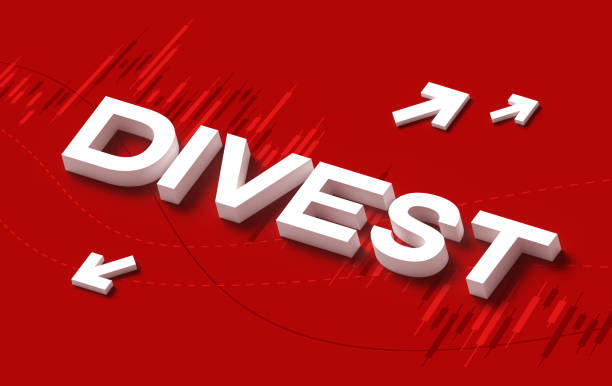July 30, 2018 – In an Opinion article published in The New York Times entitled “More Cities and States Should Divest From Private Prisons,” Scott M. Stringer, comptroller of New York City and trustee for New York City’s Retirement Systems, along with Javier H. Valdés, a community organizer, made the case for divesting from private prison company holdings in public pension fund investments. They argued that “pension funds have a fiduciary duty to make sound investments that grow their portfolios and help fund retirement benefits for their members.” That means, according to the two authors, constantly evaluating the long-term viability and risk of investments across the pension funds’ portfolios, which is what the New York City Comptroller’s Office does every day. Specifically, the authors observe that “investment in for-profit prison companies exposes the system to undue legal and regulatory risks and worker-safety issues that are inconsistent with the board’s risk profile and objectives.” While the argument has merit on moral, social and potentially financial grounds, the impact of divestment is unclear and open ended, its application has limitations as well as financial consequences and, in the end, there may be more effective ways to address these and similar concerns both on the part of the City as well as other institutional and retail investors.
Alternatives to a divestment strategy that may better serve investors and potentially have greater net impact include, but are not limited, to the following: (1) advocating for the proactive integration of relevant and material environmental, social and governance (ESG) risks and opportunities in investment strategies. Applying this to private prisons, as an example, the decision on whether to buy, hold or sell the stocks and/or bonds of private prison companies such as CoreCivic (CXW), and Geo Group (GEO) should take into consideration any relevant and material risk exposures faced by these companies, such as the consequence of political and reputational risks, direct and indirect financial consequences on the firm’s operations, and legal liabilities, to mention just a few. Alternatively, to the extent these private prison operations modify their operations, investments in these companies could lead to opportunities, (2) taking a more active role via corporate engagement as well as proxy voting initiatives, either individually or collaboratively, in an effort to alter the behavior and strategies of these companies, and (3) for individual investors, at least, seeking to maximize risk-adjusted financial returns from their portfolios and allocating a portion of the gains to advocacy groups aligned with their environmental social, moral or ethical preferences.
July 9, 2018 – Two-thirds of European fund “gatekeepers” are willing to experience underperformance for one year or more when selecting ESG strategies. These findings as reported in Expert Investor by Jassmyn Gos, states that investment selection professionals recognize that “greater patience” is required when making “socially-responsible investing”. This view is supported by the belief that ESG investments are more likely to pay-off during market contractions when “ill-governed companies will suffer”. Definitional considerations between ESG strategies and socially-responsible investing aside, we are encouraged by these survey results, but caution that portfolio management processes vary in their buy-sell strategies, and as a result, performance over different investment periods, and among approaches, styles, and other investment factors are anything but certain.
July 5, 2018 – Richard Lightbound reports in ROBO Global that he see a major “shift” in focus toward ESG investing to it ”becoming a top priority for corporate and institutional investors alike”. His informal survey at a recent conference in Australia leads him to conclude that ESG is delivering on its promise “to create a better world while offering the potential for highly competitive returns”. One can only hope, but we reserve our opinion until ESG investing strategies, as contrasted to socially-responsible investing practices, has undergone at least a full market cycle. At the very least, the performance history for ESG funds is too short and limited to too few market condition to draw any conclusions. Their lasting effects on sustainable business practices will take time as well.
July 3, 2018 – In an interview in CityWire, Carole Tanguy-Lepy of Rothschild identifies several impedances that could slow ESG investing’s going mainstream. Among these is the need for ESG strategies to show “positive impact and superior performance” while managing risk. She sees that generally, the asset management industry is moving to respond to investors desires for ESG integration, but also sees the need for increased transparency when using these strategies. The need to capture and measure ESG impacts is of growing importance. For the institutional market we view these considerations as being critical. For retail investors and those distributing to them, we see the need to combine fund performance and ESG impacts as necessary and complementary set of deliverables.
July 2, 2018 – A report by Cerulli finds that 55% of asset managers feel that lacking ESG related company data will be less of a “barrier” in 2 years. This is seen as a major step toward increasing managers’ use of quantitative models when assessing ESG investment factors. The lack of consistent ESG data among companies is believed to cause investment bias, especially toward large-cap stocks. It will improve “how asset managers integrate ESG” according to the report. We agree, but believe that the quantitative analysis of ESG factors should be consciously tempered for qualitative considerations. We think that a too heavy reliance on quantitative assessment of ESG factors could lead to incomplete and possibly misleading conclusions.






